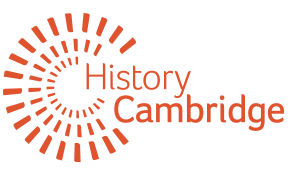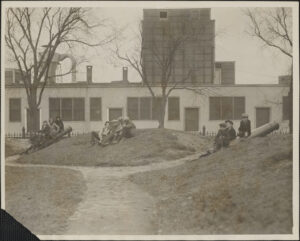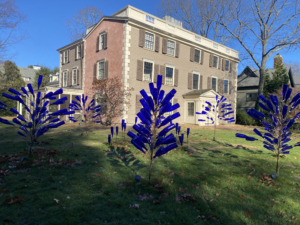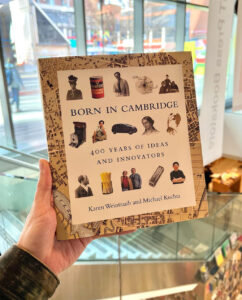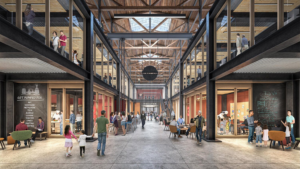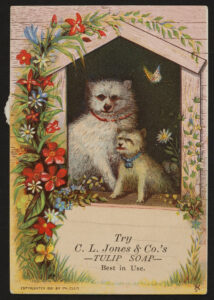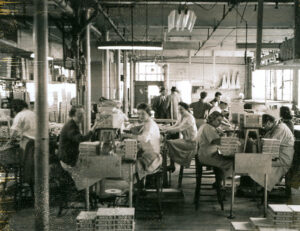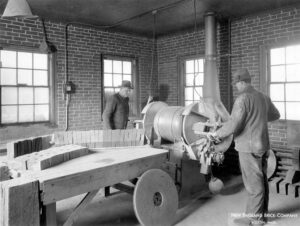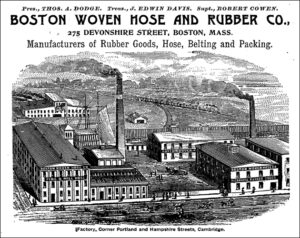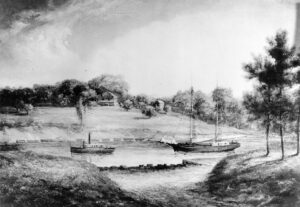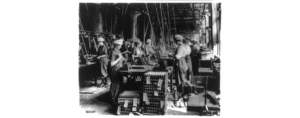Posts Tagged ‘industry’
Fort Washington History Hub
Fort Washington Park is the last remaining fortification from the Revolutionary War in Cambridge, but the park and neighborhood hold rich histories beyond the Revolutionary era. This History Hub contains materials that details the eras of the park
Read MoreHistory Cambridge looks back at 2022
As 2022 comes to a close, History Cambridge is looking back on a year filled with events and collaborations that have helped us to live into our mission to collect and share the stories of all Cantabrigians. Our theme for 2022 was “Who Are Cambridge Workers?” Many of our programs focused on the history of labor in the city, but we also held events and created partnerships in other areas of Cambridge history, including our temporary art installation honoring the lives of the enslaved people who lived and worked on Brattle Street.
Read More‘Born In Cambridge’ authors plan a walking tour this month of Cambridgeport and its innovations
In their new book, “Born in Cambridge: 400 Years of Ideas and Innovators,” Karen Weintraub and Michael Kuchta argue that “the story of Cambridge reflects the story of America … Major events and trends that affected the nation left fingerprints here, too.” How the city and its residents react to those forces, though, makes for a compelling story of invention, reinvention and adaptation spanning four centuries.
Read MoreThe Foundry and Squirrel Brand Apartments share something: examples of adaptive reuse
Adaptive reuse – revitalizing an existing, often imperfect, structure for new purposes – exists in many forms, but is often good environmentally. From refurbishing building materials to “cultural recycling” of entire structures, it means avoiding complete demolition.
Read MoreSept. 29 Soap & Bones Recap: A Benefit for History Cambridge
What do you know about “Greasy Village”?
Join us as we explore this unique part of Cambridgeport and show your support for local history.
Read MoreChanging Tides in Cambridge Industry
By the early 20th century, Cambridge was an industrial center with a broad array of factories. People from all over the country and the world came to work here. Why?
Read More‘Changing Tides in Cambridge Industry’ talk will examine wave of labor and immigration
Since its beginnings as a colonial settlement, Cambridge has seen numerous shifts in its population, as waves of migrants arrived from various parts of the United States and around the world. As these new Cantabrigians arrived in the city needing work, many found jobs in the city’s industrial sector, most notably in the glass, brick, furniture, meatpacking and confectionary factories in Cambridge. Employment in many of these industries was dominated by different immigrant groups at different periods, with newer arrivals taking jobs in lower-paying, more physically demanding sectors. Eventually these ethnic groups would move up the socioeconomic ladder, finding employment in more lucrative and less strenuous industries while the next wave of newcomers replaced them. For many, similar work experience at home and the recommendation of friends, family or others of their same ethnicity led them to choose a particular industry. For others, their status as immigrants drastically limited the employment options open to them. Whether by choice or circumscription, the clustering of migrant groups in particular industries helped shape the labor landscape of Cambridge.
Read MoreA Brief History of Zoning in Cambridge
By Doug Brown, 2016 Just as we have a place for everything in a well-ordered home, so we should have a place for everything in a well-regulated town. What would we think of a housewife who insisted on keeping her gas range in the parlor and her piano in the kitchen?–Cambridge Tribune, March 8, 1919…
Read MoreWhen The Port Was a Port
By Michael Kenney, 2014 An early 20th century photograph of the schooner Henry Endicott heading up the Charles River towards the Broad Canal stands as evidence that there was a time when the “port” in Cambridgeport had any real meaning. The Henry Endicott was a 192-foot, three-masted schooner built in Bath, Maine, in 1908, for…
Read MoreWho Is Essential Cambridge? Part 1: War and Industry
What was the role of Cambridge women in industrial production?
Read More